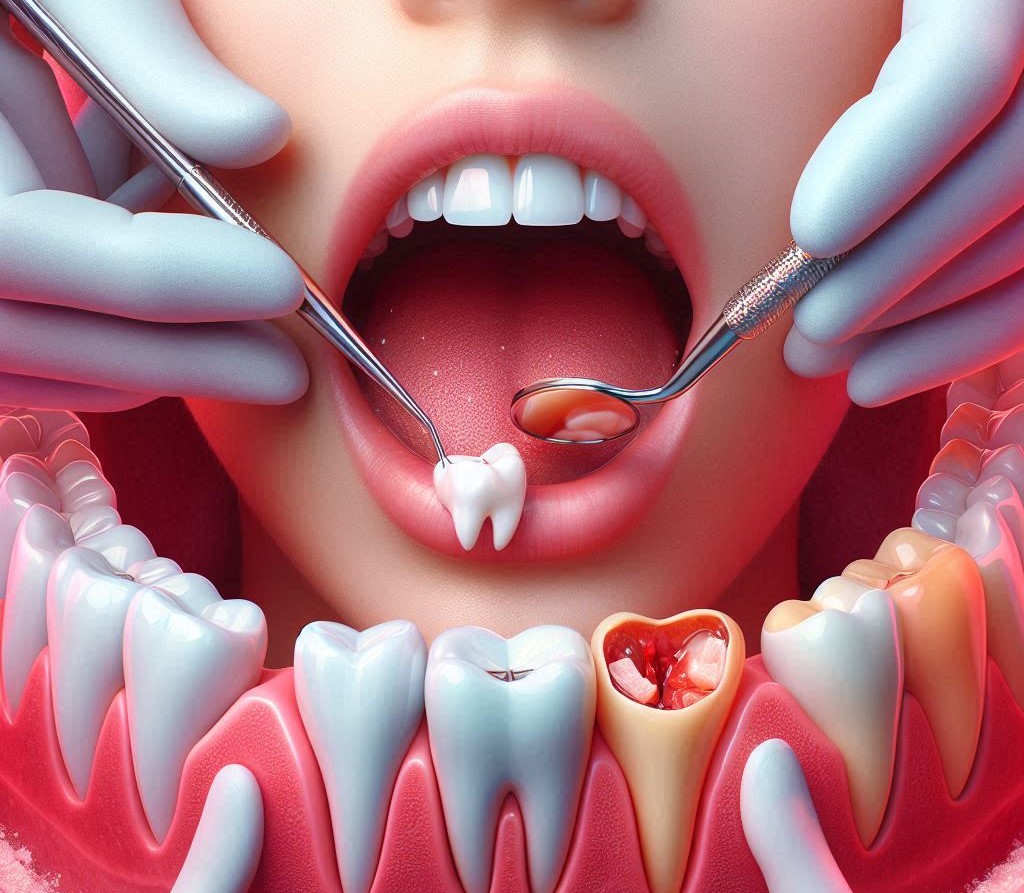Dental fillings are a fundamental aspect of restorative dentistry, used to repair teeth damaged by decay, trauma, or wear. While traditional fillings have been a staple for smaller cavities, the need for more durable and aesthetically pleasing restorations has given rise to inlay and onlay fillings. These restorations offer significant benefits, particularly for patients requiring more extensive repairs. But how do they compare to regular fillings? In this article, we’ll dive deep into inlays and onlays, their advantages, and how they stack up against traditional fillings in terms of process, durability, appearance, and cost.
What Are Inlay and Onlay Fillings?
Inlay Fillings
An inlay is an indirect restoration designed to fit within the grooves and cusps (the raised points) of a tooth, typically on the biting surface. Inlays are ideal for teeth that have been significantly damaged by decay but still have enough of their natural structure to hold the restoration in place. Unlike regular fillings, which are applied directly to the cavity, inlays are fabricated in a dental laboratory based on impressions taken of the prepared tooth.
Made from materials such as porcelain, resin, or gold, inlays are custom-made to fit the cavity precisely. This customization allows for a much more seamless and durable solution than traditional fillings, particularly when it comes to large cavities.
Onlay Fillings
An onlay is similar to an inlay but more extensive. Onlays cover one or more of the tooth’s cusps in addition to the central portion. Onlays are often recommended when there is significant damage to the tooth, especially if multiple cusps are involved. They are typically considered a more conservative alternative to a full dental crown, as they preserve more of the natural tooth structure while still providing superior protection.
Just like inlays, onlays are custom-created in a dental lab after an impression is taken. They can be made from porcelain, composite resin, or gold, with porcelain being the most common for aesthetic purposes.
What Are Regular Fillings?
Regular fillings are typically direct restorations, meaning they are applied directly into the cavity by the dentist during a single visit. The material is soft when placed in the tooth, and the dentist uses special tools to mold it into shape. Once the filling is in place, it is hardened, either with a special curing light (for composite fillings) or through natural setting (for amalgam fillings).
There are a few types of regular fillings:
- Amalgam Fillings: Made from a mixture of metals such as silver, mercury, and tin, amalgam fillings are highly durable and are often used for larger cavities in the back teeth. However, their silver color makes them highly visible, and many patients opt for alternatives like composite fillings for aesthetic reasons.
- Composite Fillings: These are tooth-colored fillings made from a blend of plastic and glass particles. They can be used for smaller cavities and provide better aesthetic results compared to amalgam, as they can be color-matched to the natural shade of the tooth.
- Glass Ionomer Fillings: Made from a combination of glass and acrylic, these fillings are used for smaller cavities, primarily in areas where aesthetics aren’t as important. Glass ionomer fillings release fluoride, which can help protect the tooth from further decay.
How Do Inlays and Onlays Compare to Regular Fillings?
Inlays and onlays offer several advantages over regular fillings, especially when it comes to durability, aesthetics, and tooth preservation. However, they also come with a higher cost and a more time-intensive procedure. Let’s explore these differences in greater detail:
Durability and Longevity
- Inlays and Onlays: The materials used for inlays and onlays, particularly porcelain and gold, are incredibly durable. Porcelain is highly resistant to staining and maintains its natural appearance for years, while gold is virtually indestructible and extremely long-lasting. Both materials bond securely to the tooth, making them resistant to decay and wear. As a result, inlays and onlays can last 10-20 years or more with proper care, especially in areas that experience heavy chewing pressure, such as the molars.
- Regular Fillings: While amalgam fillings are durable and can last 10-15 years, composite fillings typically have a shorter lifespan, lasting about 5-10 years before they need replacement. Over time, composite fillings may become prone to chipping, staining, or shrinking, which can compromise their strength and effectiveness. Glass ionomer fillings, although durable, are less resistant to wear and typically last only 5-7 years.
Aesthetic Appeal
- Inlays and Onlays: One of the most significant advantages of inlays and onlays is their aesthetic appeal. Porcelain restorations are designed to match the natural color and translucency of your teeth, making them virtually indistinguishable from the surrounding tooth structure. This makes them an excellent choice for visible teeth that need restoration, such as the front teeth. Composite resin inlays and onlays are also highly aesthetic, although they may not be as stain-resistant as porcelain.
- Regular Fillings: While composite fillings can be color-matched to your natural teeth, they may not provide the same level of aesthetic perfection as inlays and onlays, especially for larger cavities or those in areas that experience significant wear. Amalgam fillings, on the other hand, are highly visible due to their metallic color, which is why they are often used for back teeth where appearance is less of a concern.
Process and Time Involved
- Inlays and Onlays: The process for placing inlays and onlays involves two visits. During the first visit, the dentist removes the decayed part of the tooth and prepares the cavity. An impression is then taken and sent to a dental laboratory, where the restoration is custom-made. On the second visit, the inlay or onlay is permanently bonded to the tooth. This two-step process takes longer and is typically more expensive than regular fillings due to the custom fabrication involved.
- Regular Fillings: Regular fillings can be completed in a single visit. After preparing the cavity, the dentist places the filling material directly into the cavity, and it hardens in place. While this process is faster and more convenient, it doesn’t offer the same level of precision and durability as inlays and onlays.
Tooth Preservation
- Inlays and Onlays: One of the main benefits of inlays and onlays is that they are designed to preserve as much of the natural tooth structure as possible. The dentist only removes the decayed portions of the tooth, leaving the surrounding healthy tissue intact. This is a more conservative approach than full crowns, which require the removal of more of the tooth’s structure.
- Regular Fillings: While regular fillings also aim to preserve the tooth structure, especially with composite fillings, larger cavities may require more extensive removal of the tooth material to accommodate the filling. However, regular fillings are generally less invasive than crowns.
Durability and Longevity
- Inlay/Onlay Fillings: Inlays and onlays are incredibly durable and can last for many years, often up to 10-20 years or more. The precision and fit of inlays and onlays help prevent future decay, as they seal the tooth more effectively than some regular fillings. They also don’t shrink over time like some direct fillings might. Porcelain inlays and onlays, while durable, may be more susceptible to chipping if they are placed in areas that experience significant force, such as the molars.
- Regular Fillings: Amalgam fillings are highly durable and can last 10-15 years or more, but composite fillings generally last around 5-10 years before needing replacement, depending on the size of the cavity and the patient’s oral care habits. Regular fillings tend to wear down more quickly than inlays and onlays, especially for larger cavities or fillings in areas of heavy chewing pressure.
Cost and Accessibility
- Inlays and Onlays: Due to the custom nature of the restoration and the time involved in fabrication, inlays and onlays tend to be more expensive than regular fillings. The cost also depends on the material used, with porcelain generally being the most costly and gold being the most durable but often less aesthetically pleasing. On average, inlays and onlays can cost anywhere from $650 to $1,500 per tooth.
- Regular Fillings: Regular fillings are generally more affordable than inlays and onlays. Amalgam fillings are the least expensive, while composite fillings fall in the mid-range. On average, regular fillings cost between $100 and $300 per tooth, depending on the material and cavity size.
Best Use Cases
- Inlays and Onlays: These are ideal for larger cavities that don’t require a full crown but need a more durable, aesthetic solution than regular fillings can provide. They are also a good option for patients who want to maintain the natural look of their teeth, especially in visible areas.
- Regular Fillings: Regular fillings are better suited for smaller cavities or situations where cost is a concern. They are also ideal for less visible areas of the mouth, where aesthetics may not be as important.
When Are Inlays or Onlays Recommended?
Inlays and onlays are generally recommended in the following cases:
- Moderate to Large Cavities: When a cavity is too large for a traditional filling but doesn’t require the extensive coverage of a full crown, inlays or onlays are ideal. Regular fillings may not provide enough support or longevity for bigger cavities, and crowns may be too invasive. Inlays and onlays offer the perfect middle ground by restoring the tooth’s function while preserving as much natural structure as possible.
- Cosmetic Concerns: For patients who want a seamless and natural appearance, inlays and onlays are a top choice. When crafted from porcelain or composite resin, these fillings can be color-matched to blend with the natural shade of your teeth. This makes them an excellent solution for visible areas, like the front teeth, where the appearance of traditional fillings (like amalgam) would be more noticeable.
- Tooth Preservation: If preserving the integrity of your natural tooth structure is a priority, inlays and onlays are a more conservative option compared to crowns. Since these restorations only require the removal of decayed or damaged tissue, they leave most of the healthy tooth intact. This helps maintain the strength and function of the tooth, while still providing the necessary restoration.
- Durability Needs: For areas that undergo significant chewing pressure, such as the molars, inlays and onlays are more durable than regular fillings. These restorations are highly resistant to wear and can withstand the forces of chewing, making them ideal for patients who need a long-lasting, strong restoration in high-stress areas of the mouth.
Inlays and onlays provide a tailored solution for these specific needs, offering durability, aesthetics, and tooth conservation in one package.
Conclusion
Inlay and onlay fillings provide several advantages over regular fillings, particularly in terms of durability, aesthetics, and preservation of tooth structure. They are highly recommended for larger cavities or teeth that require more significant restoration, especially in visible areas. While the process is more time-consuming and costly, inlays and onlays offer long-term benefits that can make them well worth the investment.
On the other hand, regular fillings remain an effective, affordable solution for smaller cavities and less visible areas. Ultimately, the choice between inlays, onlays, and regular fillings depends on your specific dental needs, budget, and aesthetic preferences. Consult with your dentist to determine which option is best for you.
SOURCES
Azzopardi, T., & Johnson, J. (2015). A comprehensive guide to dental restoration materials. Journal of Dental Science, 12(4), 234-245.
Benson, J. T., & Miller, R. S. (2017). Comparative analysis of indirect restorations in dentistry. Clinical Dentistry, 9(3), 150-162.
Coulter, J. D., & Roberts, E. M. (2019). Advancements in tooth restoration techniques: A review of inlays and onlays. International Journal of Dentistry, 35(7), 98-112.
Fletcher, S., & Thompson, P. R. (2018). Dental fillings: Understanding materials and techniques. Dental Health Journal, 23(2), 82-95.
Harper, J. M., & Jackson, B. P. (2020). Porcelain versus composite inlays: A clinical review. Journal of Esthetic Dentistry, 25(6), 420-428.
Sullivan, R. P., & Walker, L. S. (2016). The evolution of restorative materials in modern dentistry. Journal of Restorative Dentistry, 31(1), 45-60.
Williams, G. T., & Thompson, D. J. (2014). The impact of dental restorations on long-term oral health. Dental Materials Review, 19(8), 500-513.
HISTORY
Current Version
February 26, 2025
Written By:
SUMMIYAH MAHMOOD




